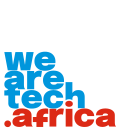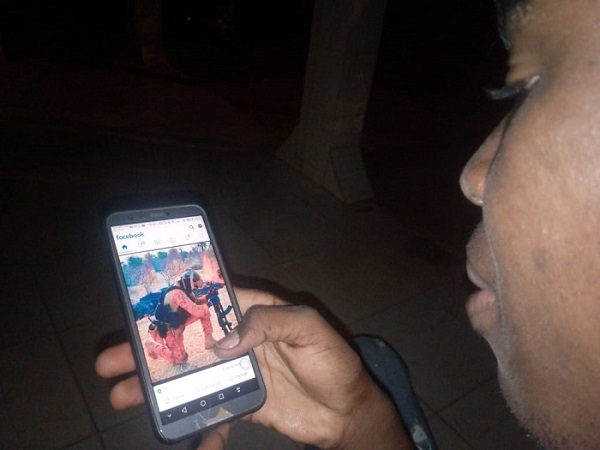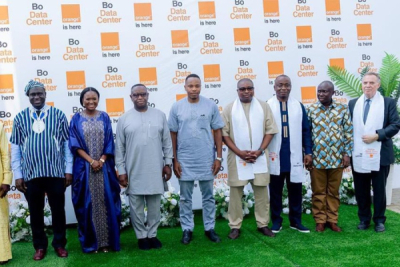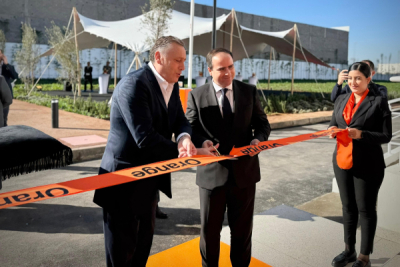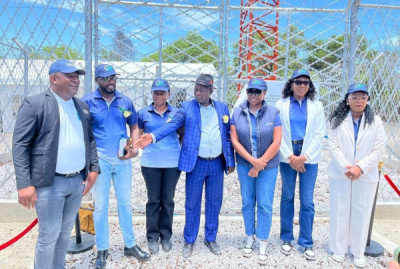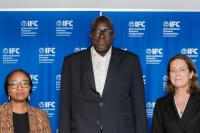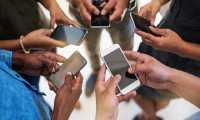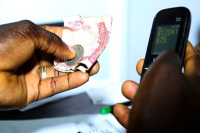
Telecom (176)
- Orange Maroc inaugurated Morocco’s first open-access cable landing station in Nador to host the Medusa subsea cable.
- The Medusa cable spans more than 8,700 kilometers and links 19 landing points between Europe and North Africa.
- Orange Maroc plans more than 100 billion dirhams ($10.9 billion) in infrastructure investments over 25 years.
Orange Maroc announced on Tuesday, December 16, the inauguration in Nador of Morocco’s first open-access cable landing station. The strategic infrastructure will host the Medusa subsea cable. The cable extends over more than 8,700 kilometers and connects 19 landing points between Europe and North Africa. The system will strengthen Morocco’s international connectivity and support its ambition to become a regional digital hub.
“This is an infrastructure that Orange Maroc teams designed and delivered through local expertise, with active participation from Orange Group experts. It will allow Morocco to strengthen its digital sovereignty and support the digital development of the Moroccan economy,” said Mohamed Benali, Chief Technology & Information Officer of Orange Maroc.
The Medusa project targets data transmission capacity of up to 20 terabits per second per fiber pair through next-generation optical fiber technology. The cable connects Nador directly to Marseille and to other strategic points in the Mediterranean. This configuration will strengthen the resilience of digital exchanges between North Africa and Europe while diversifying connectivity routes. The landing station built by Orange Maroc covers 3,500 square meters and includes IT capacity designed to host advanced digital services.
A project aligned with a national and regional strategy
These developments align with Orange Maroc’s long-term strategy. The company plans more than 100 billion dirhams in investments over 25 years to develop national digital infrastructure. The strategy supports 5G deployment, artificial intelligence solutions, and digital sovereignty initiatives through the Orange Tech data center and cloud partnerships.
At a broader level, these initiatives also align with Morocco’s digital transformation ambitions. The country aims to build a high-performance, sustainable, and competitive digital ecosystem. This ecosystem will support national economic growth while integrating social and environmental commitments, including a target of 100% renewable energy use by 2040.
Economic and technological impacts
From an economic perspective, the arrival of the Medusa cable could reshape Morocco’s digital landscape. Improved international connectivity will attract new technology investments. The infrastructure will support the expansion of digital services and reduce bandwidth costs for businesses and users. The cable will also provide strategic redundancy amid rising data flows and growing demand driven by 5G, cloud computing, and artificial intelligence.
This article was initially published in French by Samira Njoya
Adapted in English by Ange Jason Quenum
- Burkina Faso enforces 2023 telecom rules, extending balances and boosting user rights
- Consumers say measures still miss core demand for lower internet prices
- Regulator reports price drops, though affordability remains far above ITU benchmark
Burkina Faso’s telecom regulator announced new consumer protection rules on Tuesday, but customers said the measures fall short of their main demand: lower internet prices.
The Regulatory Authority for Electronic Communications and Posts (ARCEP) said the rules, suspended since they were adopted in 2023, are now enforceable following a court ruling. The changes include extending the validity of users’ main account balances from 90 to 180 days, allowing promotional credits to be used across all networks, and giving customers a grace period to reclaim unused call credit and data. The regulator also set a minimum one-month validity for 1-GB data bundles.
Alongside lower prices, subscribers are calling for clearer improvements in service quality, slower data depletion, better usage-tracking tools, and new offers such as unlimited plans.
The rules were drafted after a consumer boycott movement in mid-April 2023 targeted operators Orange, Moov Africa and Telecel over high costs and poor service. Public frustration has persisted since then, often voiced on social media.
ARCEP says the new measures are “concrete, objective and operational,” and will help lower service costs and strengthen consumer protections.
According to Executive Secretary Wendlassida Patrice Compaoré, the changes have already reduced the average prices of standard mobile internet plans from Orange Burkina Faso and ONATEL by between 28% and 45%, depending on plans with at least a one-month validity. Regulatory decisions regarding Orange Burkina Faso have also halved SMS prices to other national networks and forced operators to gradually make bonuses usable across all networks.
The International Telecommunication Union (ITU) reveals that monthly mobile internet spending in Burkina Faso amounted to 8.8% of GNI per capita in 2025. For a service to be considered affordable, this ratio must be below 2%. The African average is 5.32%, compared with 1.38% globally.
Isaac K. Kassouwi
- Algeria launches phased 5G rollout after issuing licenses to three operators
- Six-year plan starts with eight pilot provinces amid rising bandwidth demand
- High deployment costs and device affordability pose challenges to nationwide adoption
Algerian authorities on Wednesday officially launched 5G services, calling it a key step in modernizing the country’s telecommunications sector. The move marks the beginning of a phased rollout intended to boost the digital economy.
Telecom operators can now install their first 5G sites and prepare offers for both consumers and businesses. The government plans a deployment that will take place over six years under a national plan calling for gradual and balanced coverage. Eight provinces will serve as pilot zones before the network is extended nationwide.
The launch follows the awarding of 5G licenses last July to Mobilis, Djezzy and Ooredoo, a decision confirmed in the Official Gazette on Nov. 24. The licensing terms detailing the technical, financial and coverage requirements were published at the same time. The licenses cost 63.9 billion dinars, or about 492 million dollars.
Authorities say the introduction of 5G marks a new stage in the country’s connectivity as demand for bandwidth grows rapidly. The technology is expected to support the expansion of artificial intelligence, the Internet of Things, cloud computing and other advanced services. Sectors such as health, industry, education and smart mobility are expected to benefit. Tests conducted by Mobilis in February 2025 reached speeds of up to 1.2 gigabits per second.
Several questions remain, including how extensive coverage will be. According to a 2022 study by Ericsson, the base cost of deploying 5G in any country ranges between 3 billion and 8 billion dollars, with an additional investment of 20 percent to 35 percent required to expand coverage. This raises concerns that deployment in Algeria could favor more profitable urban areas while leaving rural regions behind.
Affordability is another challenge. According to a 2022 report by the GSMA, 5G-compatible smartphones start at around 150 dollars from several manufacturers, a price still inaccessible for many African consumers, especially when upfront payment is required. The organization estimates that device financing programs will likely be needed to make these phones affordable and help drive 5G adoption.
Isaac K. Kassouwi
- Orange Sierra Leone inaugurated a €23 million ($26.7 million) backup datacenter in Bo.
- The company invested $50 million to modernise its network, now fully 4G- and 5G-compatible.
- Orange Sierra Leone controls 51% of the mobile market with 3.04 million subscribers.
Orange Sierra Leone continues to scale its network infrastructure as the market leader. The company recently announced that it invested $50 million to modernise its nationwide telecom network.
Orange Sierra Leone inaugurated a new datacenter on 29 November in the southern city of Bo. The company built the facility for €23 million ($26.7 million) as an identical replica of its main datacenter in Freetown. The operator says the new site will function as a disaster-recovery hub to prevent emergencies, outages or natural disasters from disrupting digital services across the country.
The company highlighted the strategic location of the site. “Strategically located in the south of the country, the new centre contributes to extending digital infrastructure to rural and regional communities, particularly in the southern and eastern corridors toward Makeni, Kono and Kenema. It will enable better distribution of network traffic and improve connectivity in underserved areas,” Orange said in a statement posted on Facebook on 30 November.
The operator built the datacenter as Freetown remains exposed to landslides such as the 2017 event and as the country continues to face recurrent flooding. The backup site aims to ensure service continuity if such disasters threaten the capital.
The inauguration aligns with Sierra Leone’s broader digital-transformation agenda. Telecom services now support daily activities for businesses, households and public administration. Communications Minister Salima Bah stressed the importance of uninterrupted service after a brief outage in August 2024. “The Internet has become an indispensable tool in our daily lives. If the connection were interrupted, everyone would realise how much we depend on it,” she said. She added that the government and telecom operators have made significant investments to prevent future disruptions.
Beyond the new datacenter, Orange Sierra Leone operates 616 telecom sites nationwide, including 40 recently deployed sites. The company powers 70% of those sites with green-energy sources. Orange also invested $50 million to modernise its entire network, which now supports full 4G and 5G capability.
The GSMA argues that these upgrades should strengthen Orange Sierra Leone’s competitive position. The organisation notes that “good quality of service can improve the digital experience and create new opportunities for individuals and the broader community.” By December 2024, Orange Sierra Leone reported 3.04 million mobile subscribers and a 51% market share in competition with Africell and QCell.
This article was initially published in French by Isaac K. Kassouwi
Adapted in English by Ange Jason Quenum
- Orange Morocco opens 1.5MW data center in Casablanca to boost digital capacity
- Facility supports cloud, AI, and cybersecurity under Maroc Digital 2030 strategy
- Solar-powered center enhances digital sovereignty amid Africa-wide infrastructure gap
Orange Morocco has opened its new “Orange Tech” data center in Casablanca, a 1.5 megawatt (MW) facility designed to support the country’s growing needs for hosting, cloud services and cybersecurity, while contributing to the national push for digital sovereignty.
In a message on X, the operator said the new site strengthens its position as a trusted partner for companies and public institutions by providing critical infrastructure for Morocco’s digital transformation.
Built on a 15,000-square-meter site, Orange Tech combines operational redundancy with strong energy efficiency. Its technical areas meet Uptime Institute standards, and the facility is equipped with more than 1,000 solar panels, generating about 700 kWp to support self-consumption and reduce the carbon footprint of hosted services. The center is designed to support hosting and cloud workloads and to deliver high availability for applications used by businesses and government agencies, including AI-related use cases.
The project supports the country’s digital ambitions under the “Maroc Digital 2030” strategy and the “New Development Model,” which emphasize digital sovereignty, infrastructure expansion, and skills development. The launch also comes as Orange ramps up its broader strategy, including advancements in 5G, artificial intelligence, and the strengthening of its B2B service portfolio.
For Orange’s business and government clients, the data center promises improved service resilience, greater security for data stored within Morocco, and better overall performance. It also enables new digital services, including sovereign cloud options, local AI processing, and high-availability hosting for mission-critical applications.
The launch takes place as Africa faces a severe shortage of data center capacity. As of mid-2023, the continent accounted for less than 2 percent of global colocation supply, with most facilities concentrated in South Africa, according to the “Data Centres in Africa Focus” report by Oxford Business Group.
Samira Njoya
- First USF phase aims to extend 4G to 9,000 people in underserved regions
- New towers deployed with robust structures to support future upgrades
- 360,000 Namibians still lacked 4G coverage in 2024, along with schools and clinics
The Namibian government aims to connect more than 9,000 citizens to 4G as part of the first phase of the Universal Service Fund (USF), which seeks to expand nationwide access to telecommunications services. The target was announced this week during the commissioning of the first tower under the program in the village of Epinga, in Ohangwena region in the north, in partnership with operator MTC.
Alongside Ohangwena, this initial phase covers underserved communities in the Kavango West, Kavango East, Kunene, and Oshikoto regions, with the goal of reaching at least 80% broadband coverage in these areas. About 10,300 additional people are expected to benefit from improved 4G services.
In implementing phase 1, the company is deploying several tower types, including 60-meter lattice towers and 80-meter and 120-meter guyed masts, all designed with strong load capacities. MTC CEO Licky Erastus said this approach ensures structural stability and allows the network to adapt to future innovations.
According to the Communications Regulatory Authority of Namibia (CRAN), 360,000 Namibians — about 12% of the population — were not covered by 4G as of February 2024. The gap also affects 339 schools and 50 health facilities. For 3G, the International Telecommunication Union (ITU) estimated 89% coverage in 2023, while 2G already covered 100% of the population.
Launched in February 2025, the USF has a base investment of 145 million Namibian dollars (about 8.4 million $), funded through government grants and a 0.5% levy on telecom operators’ revenue. While network deployment brings infrastructure closer to communities, effective adoption still depends on several factors: access to compatible devices, service affordability, and digital skills.
According to DataReportal, Namibia had 2.67 million mobile subscribers at the start of 2025, representing a penetration rate of 87.1%. Internet users numbered 1.97 million, or 64.4%.
-
IFC grants €80M loan to Orange Mali to expand digital infrastructure
-
Funds to add 300 4G antennas, connect 300,000 homes, promote solar energy
-
Project backs digital inclusion, targets rural areas and women’s participation
The International Finance Corporation (IFC), the World Bank’s private sector arm, announced on Monday, Nov. 17, an 80 million euro ($92.7 million) loan to Orange Mali SA. The funding will help modernize Mali’s telecommunications infrastructure, expand broadband coverage and improve access to digital financial services.
“This partnership strengthens our commitment to digital inclusion and broader telecom access. With the IFC’s support, we will extend network coverage, improve its resilience and enable more Malians to benefit from the opportunities of the digital economy,” said Aboubacar Sadikh Diop, CEO of Orange Mali.
The financing package includes 50 million euros from the IFC’s own resources and 30 million euros provided by the West African Development Bank (BOAD). The investment will support the installation of 300 new 4G antennas and the rollout of a fiber network that will connect around 300,000 households and small businesses, nearly half of them in rural areas.
The project also features digital training programs aimed at having women represent 70 percent of participants by 2032, contributing to greater digital inclusion. Orange Mali will also replace its diesel generators with solar systems, a shift expected to cut annual CO2 emissions by more than 8,000 tonnes.
This investment is the first made under the partnership signed between the IFC and Orange Middle East and Africa (OMEA) during the Africa CEO Forum in Abidjan in May 2025. It supports Mali’s Mali Digital 2020 strategy and the World Bank Group’s Digital Economy for Africa initiative, which aim to use technology to create jobs, strengthen resilience and promote sustainable development.
Mali has prioritized rural connectivity in recent years. A separate agreement between Intelsat and Orange Mali recently enabled 360,000 residents in remote areas to gain internet access. Still, significant gaps persist. According to a DataReportal report published on Nov. 8, Mali had 8.91 million internet users at the end of 2025, representing 35.1 percent of the population.
The new funding is expected to allow Orange Mali, the country’s leading operator with more than 12 million subscribers, to accelerate network expansion, improve connectivity in underserved regions and broaden digital access. It will also support the growth of online services already available in Mali, including telemedicine, digital education and mobile financial services.
Samira Njoya
- GSMA, African operators set $30–$40 4G smartphone standard
- Coalition urges tax cuts, bulk orders to lower device costs
- Affordable smartphones key to bridging Africa’s digital divide
The GSMA, the global telecom industry body, and six major African mobile operators, including Orange, are joining forces to expand smartphone access across the continent. On Tuesday, Oct. 21, at the Mobile World Congress in Kigali, Rwanda, the coalition announced a basic technical standard for affordable 4G smartphones. The standard defines key components such as memory, screen, battery, and camera, aiming to ensure a reliable and durable 4G experience at a target price between $30 and $40.
According to the GSMA, the physical components of a smartphone—the screen, processor, memory, radio, and battery—account for 50% to 70% of its total cost. The group says lasting price cuts require optimizing component costs, achieving economies of scale through mass production, and streamlining expenses such as patents, logistics, and distribution margins.
Standardization is central to this approach: by allowing all carriers to order the same model, component suppliers can lower prices for large orders. The GSMA hopes to consolidate demand around a single design, giving manufacturers confidence to produce at scale and cut costs.
In the coming months, the GSMA plans to work with Original Equipment Manufacturers (OEMs) and tech firms to define the core requirements and gain their support for affordable 4G devices.
To make this vision a reality, the coalition is focusing on two main strategies. In the coming months, the GSMA plans to work with Original Equipment Manufacturers (OEMs) and tech firms to define the core requirements and gain their support for affordable 4G devices. At the same time, it is urging African governments to cut taxes on smartphones priced below $100. South Africa, for example, removed excise duties on phones costing under 2,500 rand ($136) in March 2025 to make devices more affordable for low-income households.
The GSMA notes that in some countries, VAT and import duties can raise handset prices by more than 30%, pushing up costs for consumers and slowing digital inclusion. “Access to a smartphone is not a luxury – it is a lifeline to essential services, income opportunities and participation in the digital economy,” said GSMA Director General Vivek Badrinath. “By uniting around a shared vision for affordable 4G devices, Africa’s leading operators and the GSMA are sending a strong signal to manufacturers and policymakers. This is an important step toward bridging the digital divide and enabling millions more people to benefit from mobile connectivity.”
For Africa, the main obstacle to mobile service access is no longer network coverage but handset cost.
For Africa, the main obstacle to mobile service access is no longer network coverage but handset cost. Over the past decade, operators have invested heavily to extend coverage. As a result, by 2024, the continent’s mobile coverage reached 86% for 3G, 71% for 4G, and 11% for 5G, according to the International Telecommunication Union (ITU). Yet only 52% of Africans were connected to mobile broadband.
GSMA Intelligence estimates that a $40 smartphone could bring another 20 million people in Sub-Saharan Africa online, while a $30 device could connect up to 50 million more.
The GSMA defines affordability as a price equivalent to 15–20% of average monthly income. The World Bank estimates that in low- and middle-income countries, an entry-level smartphone costs about 18% of a typical adult’s monthly income—but this rises to 73% for the poorest 40% of households in Sub-Saharan Africa.
For telecom operators, making smartphones more affordable is strategically vital: it means a broader internet user base and higher data revenue.
Beyond technology and tax policy, genuine smartphone accessibility requires a mix of measures to ease entry and promote lasting use.
Beyond technology and tax policy, genuine smartphone accessibility requires a mix of measures to ease entry and promote lasting use. Financing is key: offering installment payments through operators or microcredit adapted to irregular incomes, with clear pricing and insurance, makes devices easier to obtain. After-sales service also matters: a local repair network, available spare parts, and capped prices extend device lifespans, reduce waste, and protect consumers’ budgets.
Building digital skills is equally important. Many still see smartphones as a luxury simply because they don’t know how to use them. Training users on basic features improves autonomy and increases the perceived value of the device relative to its cost.
Combined, these factors make a smartphone a genuine investment — a tool for work, education, and access to essential services. To sustain this progress, policymakers and industry must design end-to-end solutions — from purchase to maintenance — ensuring smartphones become a lasting driver of digital inclusion.
Muriel Edjo
Orange is leveraging the momentum of mobile payments to normalize digital gold trading. Given gold’s role as a hedge against inflation and currency volatility in Egypt, embedding it in mobile wallets could significantly expand retail participation in the gold market.
Orange Egypt has launched a platform for buying and selling gold via mobile wallets. The telecom company announced today, September 25. The platform was launched in partnership with mnGm, Egypt’s specialized online gold trading company.
“By introducing Egypt’s first digital gold trading platform, we are redefining mobile wallets,” said Ahmed El Abd, Chief Consumer Business Officer of Orange Egypt. “We want wallets to be full financial tools—letting customers save, invest, and diversify.”
Orange says customers can buy and sell gold via the My Orange app and Orange Cash Wallet, starting from as little as EGP 5. To drive adoption, Orange offers up to EGP 100 cashback on the first monthly gold purchase of EGP 500 or more, redeemable toward mobile bills, recharges, or bundles.
The user experience is fully digital—customers register once with their wallet PIN and national ID, pick the gold amount they want, confirm via SMS, and complete payment instantly through Orange Cash.
The move taps into a major shift in Egypt’s digital payments landscape. Mobile wallet transactions in Q2 2025 alone reached EGP 943.4 billion (USD 19.63 billion), rising 72% year-on-year, according to the National Telecom Regulatory Authority. Active e-wallet accounts in Egypt surged to 46.3 million, a 29% increase from the previous year.
This is a strategic expansion of Orange’s fintech presence. By embedding gold trading into its wallet ecosystem, Orange deepens customer engagement, strengthens loyalty, and unlocks new revenue channels beyond telecom services.
In a digital payments market projected to reach USD 184.31 billion by 2030, at a CAGR of 16.76% during the forecast period (2025-2030), per Research and Markets data, the timing could provide Orange with critical leverage over competitors.
Hikmatu Bilali
Driven by the rapid growth of mobile phones, Africa has transformed the device into a powerful banking tool. Millions of people who were previously excluded from the financial system now have access to transfer, savings, and payment services. This profound and quiet shift is reshaping economies and challenging traditional financial models.
Over the past 15 years, mobile money has become one of the most transformative forces in Africa’s financial system. The service, which allows people to send, receive, and store money with a mobile phone, has reshaped financial habits across the continent.
Traditional banking still struggles to reach many Africans—57% of the population had no bank account in 2021, according to the report Digital Banking in Sub-Saharan Africa by BPC and Fincog. Mobile money has filled much of that gap, expanding at a rapid pace.
Launched in Kenya in 2007, the service counted 57 million subscribers in sub-Saharan Africa by 2012. By 2021, the figure had risen to 621 million. In 2024, Africa reached 1.1 billion registered accounts, representing 53% of the global total, and processed 81 billion transactions worth $1.1 trillion, or 66% of worldwide value, according to GSMA.
What began as a simple money transfer tool has become a major industry. Mobile money now drives growth, expands financial inclusion, and creates socio-economic opportunities. From Nairobi to Dakar, Abidjan to Lagos, mobile phones have become pocket banks, reshaping access to financial services and making a measurable contribution to GDP and daily life.
Economic weight
The impact is no longer marginal. GSMA data show that in 2023, the combined GDP of countries offering mobile money services was $720 billion higher than it would have been without them. In sub-Saharan Africa, the sector’s direct contribution rose from $150 billion in 2022 to $190 billion in 2023. Regional disparities remain, but the overall trend is one of deepening economic influence.
 Source: GSMA
Source: GSMA
“Mobile money had a greater impact on the GDP of West African countries than elsewhere on the continent. This is evident when comparing countries in Sub-Saharan Africa (Figure 12). In Benin, Côte d’Ivoire, Ghana, Guinea, Guinea Bissau, Senegal and Liberia, mobile money contributed more than 5% to GDP. In East Africa, mobile money contributed more than 5% to the GDPs of Kenya, Rwanda, Uganda and Tanzania. Elsewhere in Sub-Saharan Africa, mobile money’s contribution to GDP has been mixed. In Central Africa, Cameroon, Congo and Gabon each saw a contribution between 5% and 8%. In Southern Africa, where mobile money is less established, contributions to GDP generally remain lower than 5%. As mobile money use grows across Sub‑Saharan Africa, its impact on national GDP may also rise over time”.
Tangible social impact
Beyond the macroeconomic figures, mobile money is changing lives. In Mali, startup OKO, working with Orange Money, has helped more than 41,000 farmers buy index insurance against climate shocks. In Ethiopia, partnerships between Lersha, Telebirr, and M-PESA provide group loans and crop insurance to strengthen food security. In East Africa, pay-as-you-go (PAYG) solar kits, paid for via mobile, are accelerating rural electrification.
These examples show why GSMA links mobile money to 15 of the 17 Sustainable Development Goals, from poverty reduction and gender equality to education access.
The service has expanded far beyond transfers. Today, Africans can save directly from their phones, access credit, buy insurance, pay school fees and utility bills, and make merchant payments. This diversification has effectively turned mobile phones into pocket-sized banks for populations often living far from traditional branches. In 2024, every region of Africa recorded growth in mobile money usage.
Regional Growth in Africa (2024)
|
Region |
Services |
Registered Accounts |
30-day Active Accounts |
Transactions |
Value of Transactions |
|
Sub-Saharan Africa |
N/A |
1.1 billion (+19%) |
286 million (+12%) |
81 billion (+22%) |
$1.1 trillion (+15%) |
|
West Africa |
74 |
485 million (+21%) |
97 million (+13%) |
22 billion (+15%) |
$357 billion (+5%) |
|
East Africa |
57 |
459 million (+15%) |
149 million (+12%) |
52 billion (+25%) |
$649 billion (+23%) |
|
Southern Africa |
15 |
27 million (+19%) |
4 million (-20%) |
543 million (-9%) |
$6 billion (+4%) |
|
Central Africa |
19 |
104 million (+24%) |
32 million (+13%) |
7 billion (+22%) |
$83 billion (+7%) |
|
North Africa |
13 |
25 million (+24%) |
3 million (+44%) |
262 million (+63%) |
$10 billion (+53%) |
Source: Ecofin Agency
Market leaders
The rise of mobile money has spurred heavy investment from telecom operators, with a few clear leaders now dominating the market.
Orange
Launched in Côte d’Ivoire in 2008, Orange Money has grown into one of Africa’s biggest financial inclusion platforms, with 40 million active users and €164 billion in transactions recorded in 2024. The service, now present across 16 African markets, processes 25 million transactions a day.
Speaking at GITEX Morocco on April 15, 2025, Jérôme Hénique, then CEO of Orange Middle East and Africa, said the value of Orange Money transactions more than doubled between 2021 and 2024, rising from €46 billion to €164 billion. The platform now channels up to €700 million in transfers each month. Orange has also expanded into savings and credit through Orange Bank Africa, which counted 1.7 million customers in 2024, alongside partnerships with local banks in markets where its own bank is absent.
MTN
MTN’s mobile money service has also expanded rapidly. By 2024, MTN MoMo reported over 63 million active monthly users across 14 of its 16 markets. Customers executed more than 20 billion transactions worth over $320 billion, according to the company. Like Orange Money, MTN MoMo offers a full suite of financial services including payments, e-commerce, insurance, loans, and money transfers.
Airtel Africa
Bharti Airtel’s African subsidiary reported 38 million Airtel Money customers in 2024, up 20.7% year-on-year across 14 markets. The platform offers money transfers, wallet payments, microloans, savings, and international remittances. It generated $837 million in revenue in 2024, a 32.8% increase at constant exchange rates compared with $692 million in 2023.
Vodacom Group
Vodacom, including its Safaricom unit, reported 87.7 million mobile financial services customers for the fiscal year ending March 2025. Its VodaCash and M-Pesa platforms, active across eight markets, processed $450.8 billion in transactions during the year, up 18.3%. Financial services revenue rose 17.6% on a normalized basis, representing 11.6% of group service revenue. Safaricom alone generated 22.6 billion rand from financial services.
M-Pesa, the cornerstone of Safaricom’s business in Kenya and Ethiopia, recorded revenue of 161.1 billion Kenyan shillings ($1.2 billion) from 37.1 million users.
Obstacles ahead
Despite mobile money’s sweeping impact on Africa’s economies and millions of lives, several challenges continue to hold back its full potential.
One is the persistent mobile ownership gap. In low- and middle-income countries, women are still 8% less likely than men to own a phone—a prerequisite for using mobile financial services. The gap varies by country: in Ethiopia, more than one-third of women still lack a handset.
The gender divide also extends to mobile money account ownership. GSMA data show that in most countries surveyed in 2023, little or no progress was made in narrowing the gap in 2024. In some, the divide has stagnated for a third straight year. In Senegal, account ownership is now almost universal for men, but more than a quarter of women remain excluded. Nigeria showed modest improvement: the gender gap shrank from 46% to 41%, with account ownership rising among both men and women in 2024.
Low levels of digital financial literacy also limit the use of advanced mobile money features. GSMA noted that in 2024, gender gaps persisted even for basic services such as deposits, withdrawals, and peer-to-peer transfers, as well as for ecosystem transactions and related financial products.
Among adults who had used mobile money, women in nearly every surveyed country were less likely than men to rely on the service. In Senegal, only 5% of women reported receiving wages or salary payments through mobile money, compared with 16% of men. In Nigeria, just 25% of women said they received client payments this way, against 41% of men. In Kenya, half of women respondents had made a merchant payment by phone, compared with two-thirds of men.
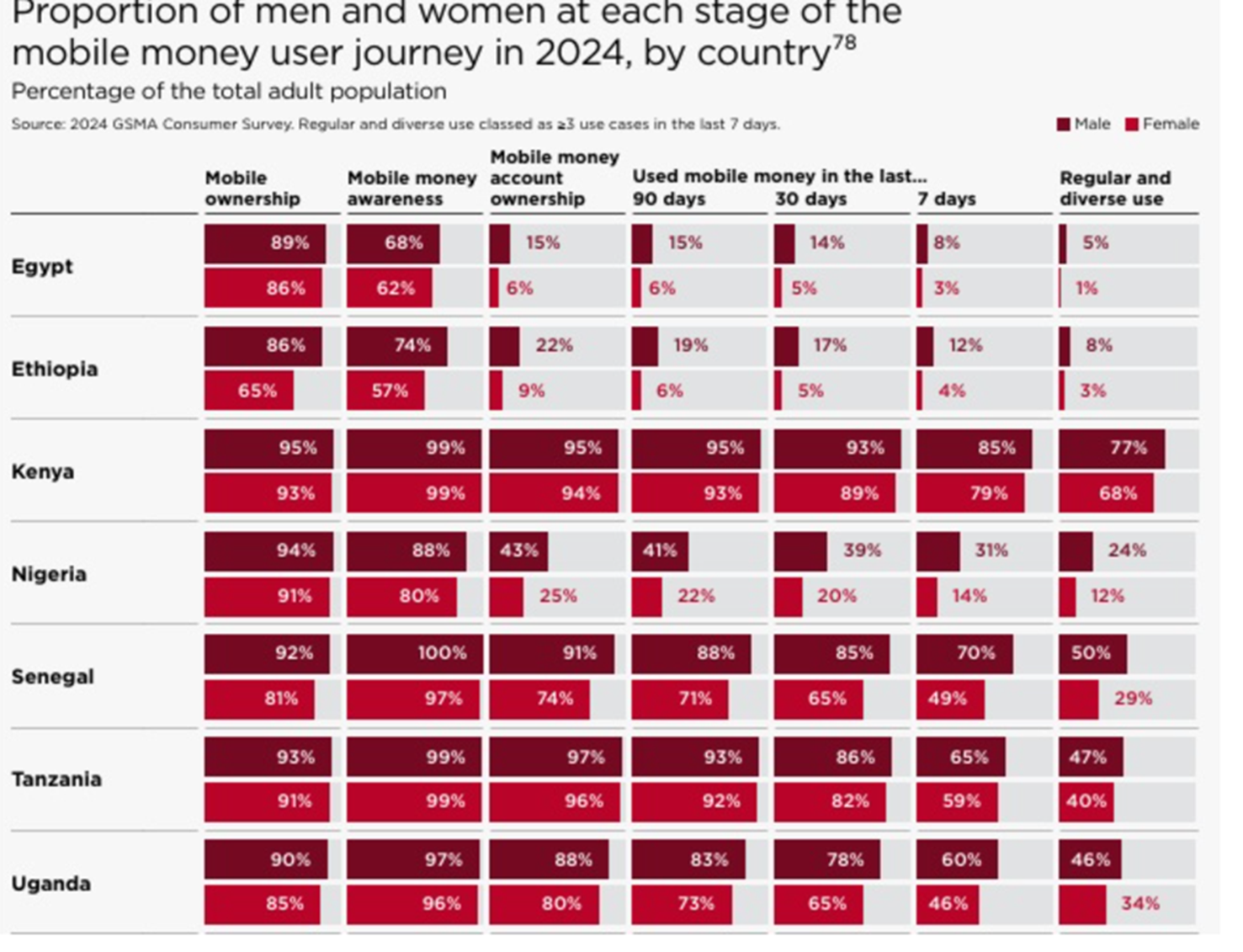 Source : GSMA
Source : GSMA
As global financial ecosystems become increasingly interconnected, the risk of fraud has risen. In many countries across Africa, Asia, and Latin America, mobile money has been affected by identity theft, insider fraud, cyberattacks, and fraud by agents. GSMA notes that each threat breaks down into specific types, such as social engineering, man-in-the-middle attacks, and malware.
Yet responses remain uneven. According to GSMA, more than 70% of mobile money providers say law enforcement is ineffective in tackling fraud due to limited technical skills, insufficient resources, and corruption. Regulators, meanwhile, are seen as only moderately supportive in the fight against mobile money crime.
An industry set to carry more weight
Mobile money is now recognized as a structural driver of Africa’s development. No longer just a tool for inclusion, it has become an integrated industry able to generate revenue, strengthen household resilience, and support strategic sectors such as agriculture and energy.
With transactions surpassing $1 trillion in 2024, mobile money has cemented itself as a pillar of Africa’s digital economy. Its future will rest on two priorities: achieving full international interoperability to make cross-border transfers seamless between telecom operators, and building greater trust through stronger regulation and tighter fraud prevention.
Muriel Edjo
More...
• Rural connectivity program targets 30 new localities under PNCR Phase II.
• Goal is to cut digital divide and expand access to education, health, and trade.
• Internet penetration remains 52.7% in urban areas vs 24.6% in rural zones.
Côte d’Ivoire’s Ministry of Digital Transition and Digitalization is leading the second phase of the National Rural Connectivity Program (PNCR) through September 25, 2025, with support from the country’s telecom regulator ARTCI. This stage aims to connect 30 additional localities to high-speed internet. The rollout began in the Worodougou region, where the villages of Yanfissa, Kangana, Kognimansso, and Dougbe are already online.
Next in line are the regions of Kabadougou, Grands-Ponts, Nawa, Sud-Comoé, Nzi, Guémon, Cavally, Poro, and Tchologo. The project seeks to narrow the digital divide between urban and rural areas, making it easier for communities to access education, healthcare, commerce, and financial services.
“Rural connectivity is central to President Alassane Ouattara’s vision of social and digital transformation. He sees technology and innovation as key drivers of economic and social development,” said Minister Kalil Konaté. “This program ensures that every citizen, regardless of where they live, has easy access to high-speed internet and digital services.”
The PNCR is part of broader government efforts to position Côte d’Ivoire as a regional digital hub. According to ITU DataHub, internet penetration in the country is 52.7% in urban areas, compared with just 24.6% in rural zones. Household access to home internet shows a similar gap: 85.7% in cities versus 57.7% in the countryside.
Ultimately, the program is expected to reduce the urban-rural gap in connectivity, strengthen digital inclusion, and boost local economic development in previously underserved areas. It could also support entrepreneurship, improve access to e-government services, and better prepare rural populations to integrate into the national digital economy.
-
GSMA projects digital transformation could create $3.4 bln and 500,000 jobs
- Agriculture, industry, trade, transport, and public administration flagged as key sectors
-
National digital strategies aim to boost tax revenue, efficiency, and competitiveness
Ghana’s economy could gain more than 40 billion GHS ($3.4 billion) and nearly 500,000 jobs by 2029 through digital transformation, according to the report Driven Digital Transformation of the Economy in Ghana released on September 3 in Accra by the GSMA. The study identifies five strategic sectors—agriculture, industry, trade, transport, and public administration—as crucial drivers for growth and tax revenue.
Agriculture holds the largest potential, with an estimated 10.5 billion GHS and 190,000 jobs from precision farming and mobile extension services. Industry could generate 15 billion GHS and 110,000 jobs through the adoption of cloud, artificial intelligence, and automation, while also providing 2.6 billion GHS in extra tax revenue.
The modernization of public administration, especially tax collection, could add 5.8 billion GHS by reducing leakages and improving efficiency. E-commerce and digital platforms are projected to contribute 5.1 billion GHS and 60,000 jobs, while digitalization in transport and logistics could add 4.3 billion GHS and 80,000 jobs.
These prospects build on measures already launched by the government. This year Ghana rolled out the RESET program, a national framework for building a “digitally inclusive, data-driven economy.” Key actions include scrapping the electronic transfer levy, launching the One Million Coders initiative to train young developers, and preparing a national digital strategy. A national artificial intelligence strategy is expected in the coming days.
The mobile industry, already a major economic driver, accounts for 8% of GDP, or 94 billion GHS. Despite 99% 4G coverage, only 62% of capacity is in use. With solid infrastructure, Ghana is well-positioned to scale up its digital transformation, supported by mobile money and affordable Internet access, which costs about 1.5% of per capita income.
Challenges remain. The mobile market is highly concentrated, with MTN holding over 75% of subscribers, which limits competition and innovation. Expanding rural infrastructure, updating spectrum management and the Universal Service Fund, and clarifying regulatory frameworks will be vital to attract sustainable private investment. According to GSMA, Ghana’s ability to reach the 40 billion GHS target will depend on balancing access, boosting competition, and fully integrating strategic sectors into the digital economy.
Orange entered the Liberian telecom market in 2016 by acquiring Cellcom. Since then, the French company has become one of the country's leading operators.
Orange Liberia invested over $250 million between 2016, when it acquired operator Cellcom, and July 2025.
The company revealed this investment last week during the 2025 Liberia Technology Summit. It covered digital infrastructure, financial inclusion, and technology education, strengthening Orange Liberia's market position in the West African country.
“We are not just witnesses to Liberia’s transformation. We are proud to be active partners—building a digital nation where innovation drives development and no one is left behind,” said Zayzay Mulbah, representing CEO Jean Marius Yao.
This statement follows the company's May announcement of a $200 million investment over the next six years. That investment aims to improve network coverage and service quality, particularly in underserved rural areas. For financial inclusion, the telecom operator has pledged to support government authorities through its Orange Money service.
“In Liberia, we are committed to the government’s payment digitization program to support all sectors of the economy in the transition to digital. Orange Money Liberia has also entered into a strategic partnership to contribute to the Central Bank of Liberia’s financial inclusion strategy,” the company’s mother group stated in its 2024 Corporate Social Responsibility report.
Adoni Conrad Quenum
The partnership directly addresses several systemic barriers slowing Africa’s digital transformation—particularly low internet access, weak innovation support systems, and fragmented regulatory environments.
AfriLabs, an African network of innovation hubs, has signed a Memorandum of Understanding (MoU) with the African Telecommunications Union (ATU), the specialised organ of the African Union in the field of Telecommunications/ICTs, to drive inclusive digital innovation across the continent. The partnership, announced July 18, brings together ATU’s 52 member states and AfriLabs’ ecosystem of over 500 hubs spanning 53 African countries to empower local solutions, close digital divides, and catalyse economic transformation.
“This collaboration with AfriLabs seeks to provide a framework that enables innovators to focus on solving real problems rather than battling regulatory barriers,” said John Omo, Secretary General of ATU. “Our entrepreneurs have the ideas and resilience, but they face fragmented regulations and limited continental visibility.”
Signed at ATU’s Nairobi headquarters, the agreement marks a critical step toward bridging Africa’s widening digital gap. It will support joint programs and communication across both organisations’ networks, such as integrating AfriLabs' capacity-building programs with ATU-led initiatives, like the Africa Innovation Challenge. It will also nurture innovation in emerging sectors like mobile internet and 5G.
Crucially, the MoU includes a framework for strengthening intellectual property (IP) protection for African innovators. The two bodies will advocate for startup-friendly IP policies and promote commercialization strategies, ensuring that African innovations are safeguarded and scaled both locally and globally.
The collaboration is aligned with the African Union’s Digital Transformation Strategy for Africa 2020–2030, which is a continental blueprint designed to leverage digital technologies for inclusive development and economic growth across Africa. By aligning regulatory support with grassroots innovation, the partnership aims to ensure this growth translates into inclusive digital services, thriving tech ecosystems, and scalable African solutions.
Hikmatu Bilali
